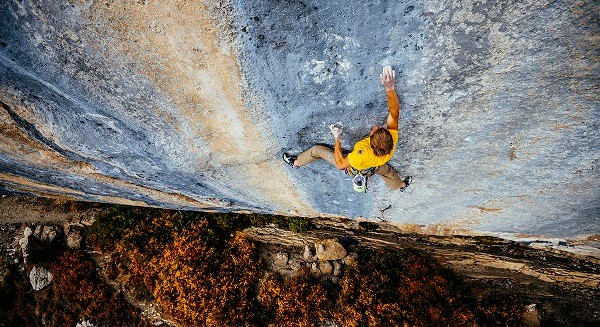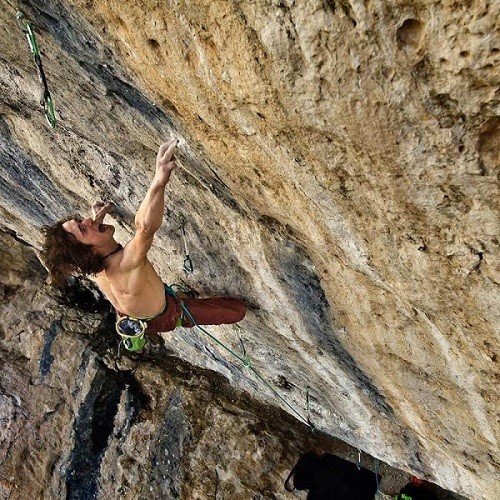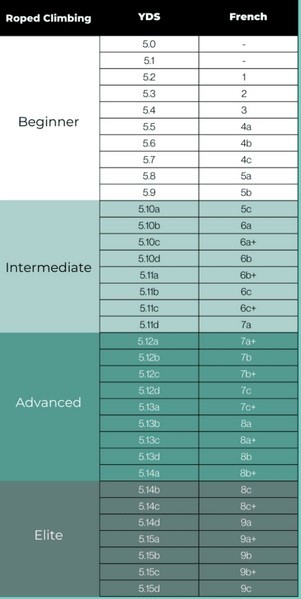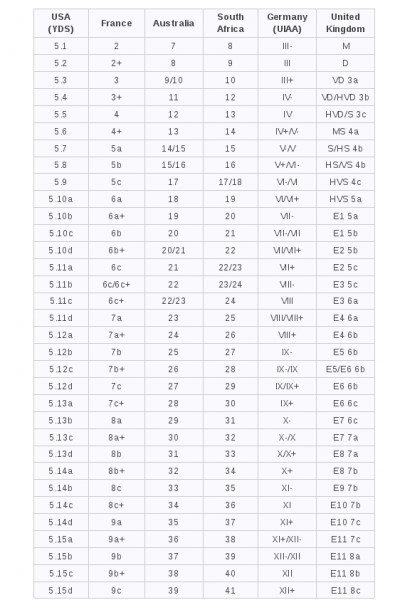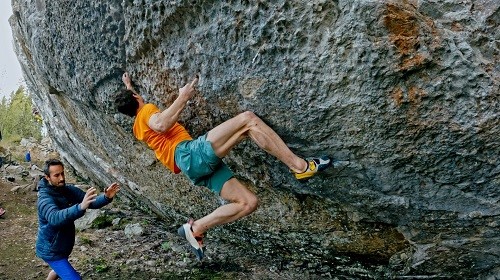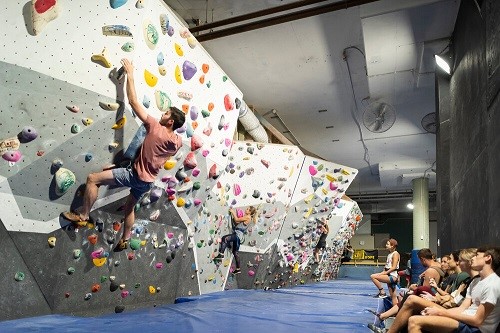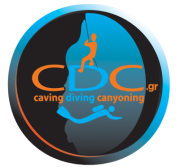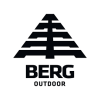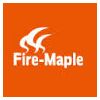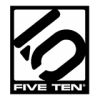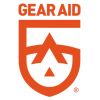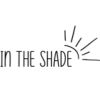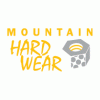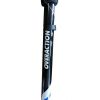When heading for a new climbing area, before we decide which routes we’re going to climb, we check the routes’ “grade”. Each known route has been assigned a specific grade by the first ascender to characterize its level of difficulty. This way we won’t be caught by surprise attempting to climb a route way beyond our capabilities.
Grades give us insight regarding how easy or hard a specific route is. If we are beginners we need beginners ‘routes to practice on, and slowly build out skill in order to move on to harder routes. As a beginner we wouldn’t want to be caught on an experts’ route.
Photo: Alex Megos / Bibliographie 9c/5.15c
Climbers usually need specific information prior to choosing a route to climb. That is the specific location of each route, the type of rock, the length of the route and finally its’ grade. The “crux”, meaning the hardest part of the route, is usually the basis of the rating/grade. Grades on specific routes can be found online, in guidebooks of a specific climbing area, or from local climbing communities.
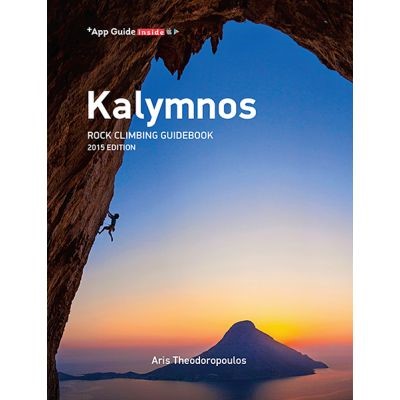
There are different grading systems describing different climbing styles: rock climbing, bouldering, aid climbing, alpine climbing, axe climbing etc. In this article we will discuss the grading systems concerning rock climbing and bouldering. Furthermore, in many areas of the world there are many different grading systems for each type of climb, for example for rock climbing there is the YDS (Yosemite Decimal System), French system, UIAA, Brazilian, South African, Australian, Saxon, Russian, Swedish, Norwegian, Polish, and more. However the most common grading systems for rock climbing are the YDS and the French system.
YDS (Yosemite Decimal System)
The YDS classifies technical rock climbs from 5.0 through 5.15.
|
5.1-5.4
|
Easy
|
A steep section that has large handholds and footholds. Suitable for beginners.
|
|
5.5-5.8
|
Intermediate
|
Small footholds and handholds. Low-angle to vertical terrain. Beginner to intermediate rock climbing skills required.
|
|
5.9-5.10
|
Hard
|
Technical and/or vertical, and may have overhangs. These hard climbs require specific climbing skills that most weekend climbers can attain.
|
|
5.11-5.12
|
Hard to Difficult
|
Technical and vertical, and may have overhangs with small holds. Dedicated climbers may reach this level with lots of practice.
|
|
5.13-5.15
|
Very Difficult
|
Strenuous climbing that’s technical and vertical, and may have overhangs with small holds. These routes are for expert climbers who train regularly and have lots of natural ability.
|
In the beginning, the YDS ranged from 5.0 to 5.9 but as climbing techniques, skills and equipment evolved, there has been an increase in climbing abilities and climbing level, therefore the grades have surpassed 5.9 and have reached 5.15 (so far –who is to know what future climbers will be capable of!) Additionally, letters from a to d are being used to subcategorize routes within the same grade. For example 5.15a is easier that 5.15c.
Photo: Adam Ondra / La Dura Dura 5.15c/9b+
French numeric system
The French system is numeric but not decimal, it starts from 1 (super easy without the use of rope) and can reach up to 9, although it is open-ended, therefore there may be higher numbers added in the future. Letters are also used here (a,b or c) as well as the plus symbol +. So a route rated 8a is easier than 8b+. For example if you put them in a sequence you’d get 5a, 5a+, 5b, 5b+, 5c, 5c+, 6a, 6a+, 6b, 6b+ etc. The French system is very widespread outside the US.
UIAA (International Climbing and Mountaineering Federation)
This system is mostly used for short climbing routes in Germany, Switzerland, Austia, and Italy. It is also used for long alpine routes in the Apls and the Himalaya. It uses Roman numerals, originally I was the easiest and X was the hardest however as climbing level has evolved, it is now an open-ended system that has reached XII. Additionally a + or – may be used to further differentiate between grades.
Below there is a chart with a comparison among the different rock climbing grading systems:
Bouldering Grades
For bouldering there is a separate grading system which assesses the technical difficulty or bouldering “problems”. Again the most widespread systems is the Hueco V-scale system in the US and the French Fontainebleau Scale (or Font) which is mostly used in Europe. The V-scale was developed in the USA and it starts from VB for super easy bouldering problems and goes all the way up to V17 for elite climbers. The Font system is numeric and starts from 1, although you’ll hardly ever see a bouldering problem assessed lower than 3, and goes all the way up to 9. Again it uses letters(a, b or c) and + or – to differentiate within the grades.
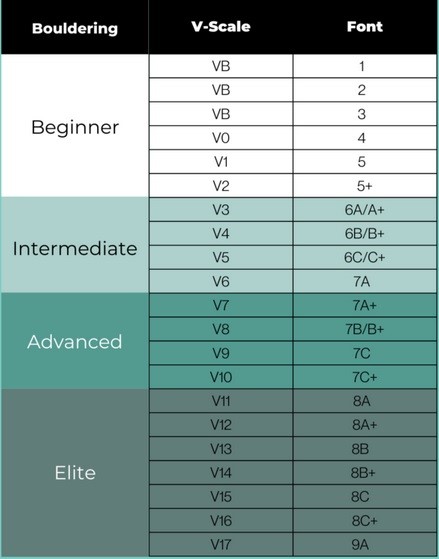
One thing that is important to remember is that there is no perfect grading system. Climbing is a very personal experience and what may feel hard for someone, might seem easy for someone else due to height, body weight, muscle force, core strength, and of course technique and experience. Therefore grading is a subjective assessment. It helps give us some insight but don’t be surprised if sometimes grading doesn’t fully agree with your opinion. Furthermore keep in mind that grading on indoor routes in a gym may vary greatly from outdoor routes as there are a number of environmental factors that may affect your climb such as, type of rock, temperature, humidity or wetness on the rocks, wind, cold fingers, etc. So you might be climbing a 7a in the gym but it will feel quite different on the crag!
Sources

